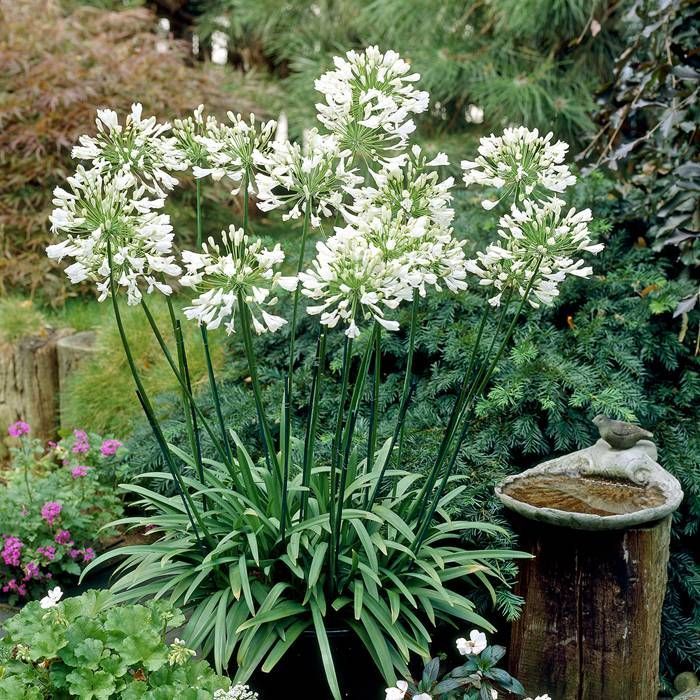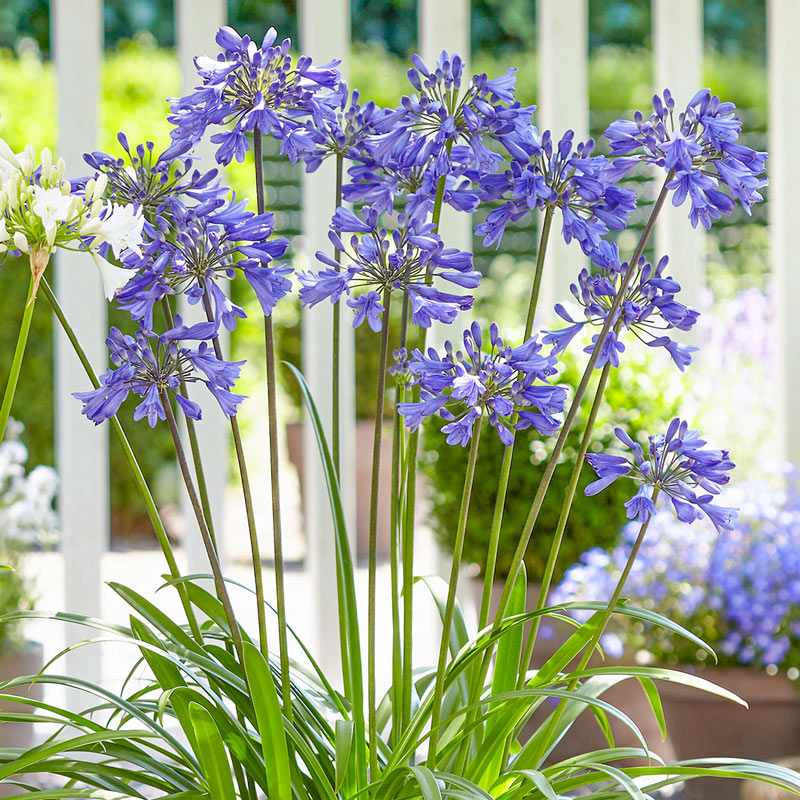Seasonal Agapanthus Treatment: Planning For Winter Months and Summertime
Seasonal Agapanthus Treatment: Planning For Winter Months and Summertime
Blog Article
Releasing the Secret to Effective Agapanthus Farming: Idea for a Flourishing Garden
In the realm of gardening, cultivating agapanthus effectively needs a critical strategy that encompasses different aspects of plant care. With cautious attention to detail, one can open the secrets to supporting these spectacular blooms, bring about a yard that flourishes with beauty and vibrancy. By recognizing the subtleties of agapanthus farming, one can produce a setting where these plants flourish and grow generously. In the complying with discussion, we will check out vital tips and techniques that will certainly lead you towards a flourishing agapanthus yard, offering insights into ideal practices, dirt problems, watering techniques, and more.
Planting Agapanthus: Finest Practices
When growing Agapanthus, appropriate soil prep work is essential for making sure successful development and development of these lovely blossoms. Agapanthus, typically referred to as Lily of the Nile or African lily, flourishes in well-draining dirt with a somewhat acidic to neutral pH degree - Agapanthus. Prior to planting, it is vital to amend heavy clay dirts with raw material such as compost or peat moss to enhance drain and supply essential nutrients for the plants
To grow Agapanthus, choose an area that gets complete sunlight to partial color, as this will advertise healthy development and abundant blooming. Dig an opening two times the size of the plant's origin round and place the Agapanthus at the same depth it was previously expanding. Gently backfill the opening with soil, pressing down strongly to remove any type of air pockets around the origins.
Water the newly grown Agapanthus extensively and remain to keep the soil equally moist, especially during the plant's active growing season. Agapanthus. Using a balanced plant food once a month can further support the plant's development and flowering. By following these finest practices for growing Agapanthus, you can develop a sensational screen of these captivating blossoms in your garden
Perfect Soil Issues for Agapanthus
For ideal growth and flowering success of Agapanthus plants, guaranteeing the soil conditions are perfect is essential. Agapanthus flourishes in well-draining dirt with a somewhat acidic to neutral pH degree ranging from 6.0 to 7.0. This type of soil permits ample water drainage, preventing waterlogging which can bring about root rot. To improve dirt drainage, consider adding natural issue such as garden compost or peat moss when preparing the growing website. Additionally, Agapanthus prefers soil that is abundant in nutrients, so integrating a balanced fertilizer during the expanding period can promote healthy development and vivid blooms.

Watering and Feeding Tips
To ensure healthy development and vivid blossoms, appropriate watering and fertilizing techniques are crucial for effective Agapanthus growing. Agapanthus plants profit from routine watering, especially throughout the expanding season.
When it concerns feeding Agapanthus, a well balanced plant food with equivalent parts nitrogen, phosphorus, and potassium can be used in the springtime to promote healthy development and blooming. Slow-release fertilizers are suitable for giving nutrients progressively over an extensive period. Avoid over-fertilizing, as this can cause excessive vegetation development at the expenditure of blossoms.
In addition, integrating natural issue like compost right into the dirt can enhance nutrient degrees and enhance soil framework, helping in the general wellness of the Agapanthus plants. By adhering to these watering and feeding pointers, garden enthusiasts can guarantee their Agapanthus plants thrive and create sensational screens of blossoms.
Trimming and Deadheading Techniques
Correct trimming and deadheading techniques play an essential role in preserving the health and wellness and aesthetic appeals of Agapanthus plants, complementing the essential techniques of watering and fertilizing for effective farming. Pruning Agapanthus includes eliminating invested flower heads, yellowing or dead fallen leaves, and overall shaping of the plant to promote better growth. Deadheading, the process of removing discolored flowers, not just enhances the plant's appearance yet also urges more growing.
When deadheading Agapanthus, it is recommended to snip off the blossom stem at the base making use of sharp, clean shears. This procedure reroutes the plant's energy from seed manufacturing back into root and foliage growth, promoting a much healthier official site and more durable plant. Regular deadheading can prolong the blooming duration of Agapanthus and avoid self-seeding, which can result in congestion.
In terms of pruning, Agapanthus usually advantages from a light trim after blooming to clean up the plant and urge fresh growth. Reducing back the spent blossom stems and getting rid of any kind of damaged or dead vegetation assists keep the plant's vigor and total look. Nonetheless, it is important to prevent cutting into the crown of the plant, as this can damage its health and wellness.

Protecting Agapanthus From Pests and Diseases
Applying efficient pest and illness monitoring methods is crucial to safeguarding the health and vigor of Agapanthus plants in growing. Agapanthus are normally hardy plants, yet they can still fall sufferer to various pests and conditions if not appropriately cared for. One common insect that impacts Agapanthus is the Agapanthus borer, browse around this web-site a caterpillar that passages into the plant, creating damage to the blossoms and leaves. To protect against problems, routine assessment of the plants is important. If borers are found, they can be by hand eliminated, or insecticidal soap can be made use of as a control action.
In enhancement to bugs, Agapanthus are susceptible to conditions such as root rot and fungal fallen leave areas. By remaining alert and attending to insect and illness concerns promptly, garden enthusiasts can help their Agapanthus thrive and grow.

Conclusion
Finally, effective cultivation of agapanthus requires appropriate planting methods, perfect dirt conditions, appropriate watering and fertilizing, routine pruning and deadheading, and defense from bugs and conditions. By adhering to these techniques and ideas, gardeners can guarantee a growing garden loaded with beautiful agapanthus blossoms. Agapanthus. Bear in mind to keep regular care and attention to information to promote the health and longevity of these stunning plants
When growing Agapanthus, correct soil preparation is vital for ensuring successful growth and advancement of these stunning blossoms.Water the newly planted Agapanthus extensively and proceed to keep the dirt equally damp, particularly throughout the plant's active growing season.For optimum development and flowering success of Agapanthus plants, making certain the soil conditions are excellent is essential. When hair transplanting or growing Agapanthus, ensure the soil is well-prepared to offer the essential structure for the plants to develop themselves successfully. One usual insect that affects Agapanthus is the Agapanthus borer, a caterpillar that tunnels into the plant, triggering damage to the flowers and leaves.
Report this page